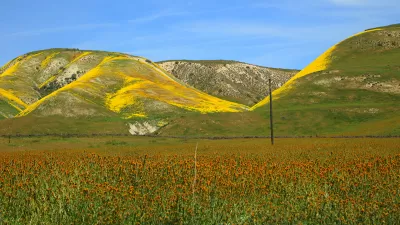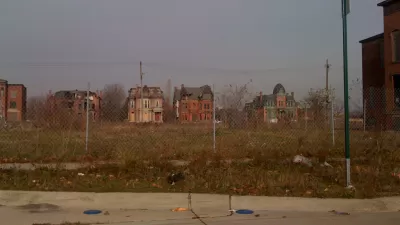Your senses (or lack thereof) aren't deceiving you. Some cities really are worse for seasonal allergies than others, and some of the reasons are entirely preventable.

Helen Lock starts this tale of seasonal allergy suffering with a particularly debilitating, even tragic, episode in Melbourne, Australia:
In 2016, Melbourne experienced a rare and extreme case of “thunderstorm asthma” that led to ten deaths and 8,500 people being admitted to hospital in one day. Ambulance dispatchers struggled to cope with 1,900 calls in the space of five hours, and one hospital ran out of Ventolin asthma inhalers. The storm had caused grass pollen to burst in the air, creating tiny particles that caused serious breathing problems when inhaled.
While allergy seasons like that have led some academics to declare the city the worst in the world for allergies, other cities have their own unique concoction of natural and human-designed factors that lead to seasonal suffering.
Meanwhile, in London, landscaping practices have led to an abundance of tree pollen, aggravating hay fever, according to a horticultural expert. Landscapers in the UK capital – and around the world – plant predominantly male trees because they are less messy than female trees, which shed seeds, fruits or pods, says Thomas Leo Ogren, creator of the Ogren Plant Allergy Scale. “The problem is that while these [male] trees and plants are litter-free, they all produce abundant allergenic pollen.”
Lock's tours Canberra, Tokyo, most of England, and the United States. Stateside, the Allergy and Asthma Foundation of America releases a report [pdf] that ranks cities by pollen counts. "In 2018, McAllen in Texas, Louisville in Kentucky and Jackson in Mississippi made the top of three of the organisation’s 'most challenging places to live with spring allergies' list," according to Lock.
FULL STORY: Which is the most hayfever-prone city – and is 'botanical sexism' to blame?

Alabama: Trump Terminates Settlements for Black Communities Harmed By Raw Sewage
Trump deemed the landmark civil rights agreement “illegal DEI and environmental justice policy.”

Planetizen Federal Action Tracker
A weekly monitor of how Trump’s orders and actions are impacting planners and planning in America.

The 120 Year Old Tiny Home Villages That Sheltered San Francisco’s Earthquake Refugees
More than a century ago, San Francisco mobilized to house thousands of residents displaced by the 1906 earthquake. Could their strategy offer a model for the present?

LA’s Tree Emergency Goes Beyond Vandalism
After a vandal destroyed dozens of downtown LA trees, Mayor Karen Bass vowed to replace them. Days later, she slashed the city’s tree budget.

Sacramento Leads Nation With Bus-Mounted Bike Lane Enforcement Cameras
The city is the first to use its bus-mounted traffic enforcement system to cite drivers who park or drive in bike lanes.

Seattle Voters Approve Social Housing Referendum
Voters approved a corporate tax to fund the city’s housing authority despite an opposition campaign funded by Amazon and Microsoft.
Urban Design for Planners 1: Software Tools
This six-course series explores essential urban design concepts using open source software and equips planners with the tools they need to participate fully in the urban design process.
Planning for Universal Design
Learn the tools for implementing Universal Design in planning regulations.
Ada County Highway District
Clanton & Associates, Inc.
Jessamine County Fiscal Court
Institute for Housing and Urban Development Studies (IHS)
City of Grandview
Harvard GSD Executive Education
Toledo-Lucas County Plan Commissions
Salt Lake City
NYU Wagner Graduate School of Public Service




























